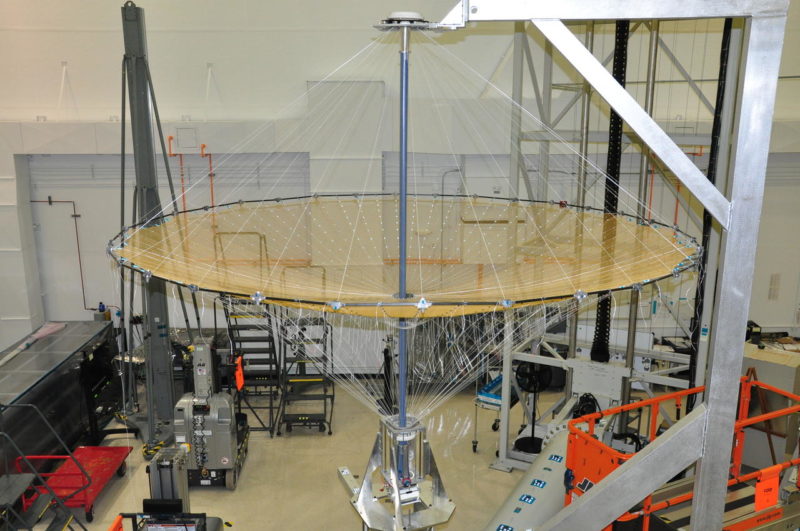Moving from NewSpace to “NowSpace”

A 5-meter High Compaction Ratio reflector. Photo: L3Harris Technologies
After reading an interesting Via Satellite article, “Satellite Manufacturing in a State of Transition,” it brought to mind the dynamics that set the industry on the creative manufacturing path we’re on today.
Over the last decade, we’ve witnessed a huge disruption in the space industry. Government contracts, have been augmented by the acceleration of commercial entrants focused on agility and innovation, lighting a spark that ignited the entire industry – and leading to a new focus on building satellites faster and making space more accessible.
This conversation about speed continues. But, I would argue that the days of conceptual thinking are over. Our warfighters simply can’t wait. We need to deliver mission relevant capability at unprecedented speed and affordability. It’s no longer about NewSpace; it’s about “Now Space.”
To achieve this transformation, satellite manufacturers are reexamining how they work to enable mission affordability. We’re looking at more mature industries that build in volume and speed for clues. Reconfigurability, architectural accelerators, and advanced manufacturing techniques are three of the areas we are exploring.
Reconfigurability has been a game-changer in the space industry. We no longer require a fully defined set of requirements before beginning the development process, and systems are designed to adapt to new applications and missions, even after delivered to orbit. Given the highly dynamic nature of space applications, both government and commercial, reconfigurability will be the foundation of responsive systems of the future. Recently, L3Harris Technologies’ reconfigurable payload won the Space Foundation’s award for innovation due to its success on orbit with 231 hosted payloads.
Architectural accelerators are smart design features that eliminate bottlenecks throughout design, building, and testing. Using Lean Six Sigma techniques, we can identify, quantify, and implement improvement opportunities. Examples include replacing long-lead parts with up-screened commercial equivalents while maintaining reliability through architectural accommodations, or building in test features to accelerate the verification process.
Advanced manufacturing techniques have also taken hold in the past few years, with additive materials, 3D printing, and automation being applied across the industry. It’s more than taking a part and building it in a different way. For the first time ever, factories are being built from the ground up for high volume space production. L3Harris Technologies has designed 35 percent of their fixed mesh antenna, which recently launched into space. The technologies are real and the positive impacts are substantial.
These are exciting times for our industry. And driving these new techniques and approaches is the critical next step in our transformation to a NowSpace that provides valuable mission solutions with affordability and speed.
 Bill Gattle is the president of L3Harris Technologies’ Space Systems.
Bill Gattle is the president of L3Harris Technologies’ Space Systems.